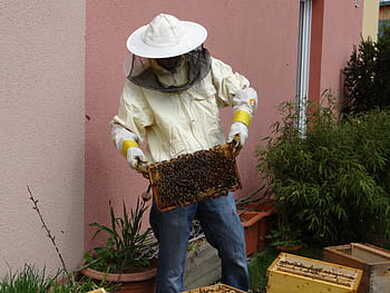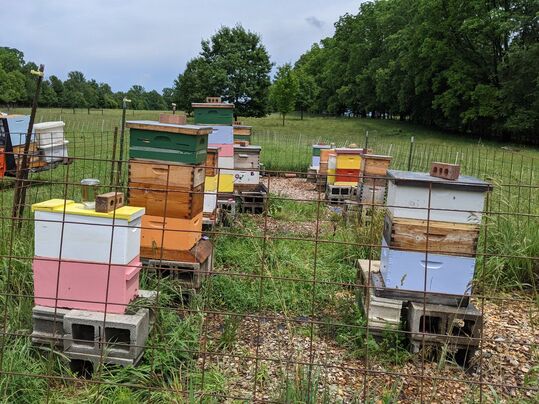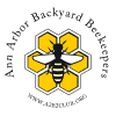 Aims Many beekeepers split their hives in the spring. This is done for several reasons: 1) To create an artificial swarm to prevent swarming, 2) To increase the number of hives, 3) To create a break in the brood cycle to help control Varroa mites, 4) To encourage the bees to raise a new, young queen, 5) To make money by selling nucs or miniature hives. 6) To make smaller hives with less bees to increase the chances of finding the queen and dispatching her to introduce a new queen and new genetics. Basic There are 2 main types of splits. With the first type, finding the queen is not necessary. With the second type, you must find the queen. The most common 1st type is called a “walk-away” split. In this split you divide the hive evenly between two boxes making sure that each has an equal number of bees as well as frames of pollen, nectar, brood, and especially at least one with eggs present. One of the boxes gets left in the location of the old hive and one gets moved to a new location and some grass or other debris placed in or over the entrance to allow bees to acclimatize to the new location. Then the beekeeper “walks away” for 4-7 days. After that time, one of the hives will have eggs and you know that’s where the queen ended up without having to find her. The other hive will have queen cells as the bees are queenless and need to make a new queen. Conditions When is the best time to make splits? In order to have a chance at a successful split, there must be enough mature drones in your area to mate with the new queen. In Southeast Michigan, this is typically around the time of the dandelion bloom or May 1st, but the best way to determine the proper time is to check your drone brood. A sign that you will have mature drones by the time your new queen is ready to mate is when the drone pupae have purple eyes. Also, you will want the weather to be above freezing at night so that the smaller split hives will be able to keep their brood warm. More Information: https://www.honeyflow.com/blogs/beekeeping-basics/spring-split
0 Comments
Leave a Reply. |
AuthorJen Haeger is a new master beekeeper and board member of A2B2. Archives
August 2022
Categories
All
|


 RSS Feed
RSS Feed
